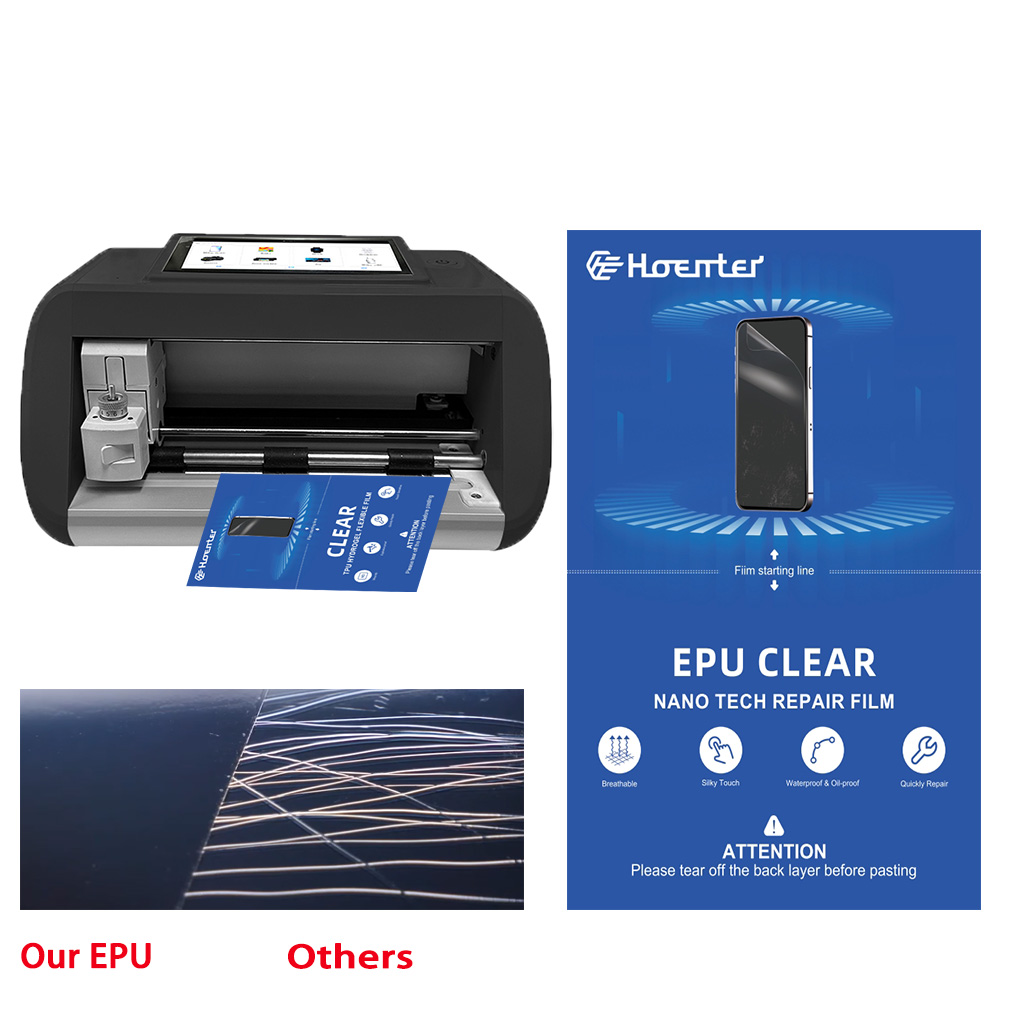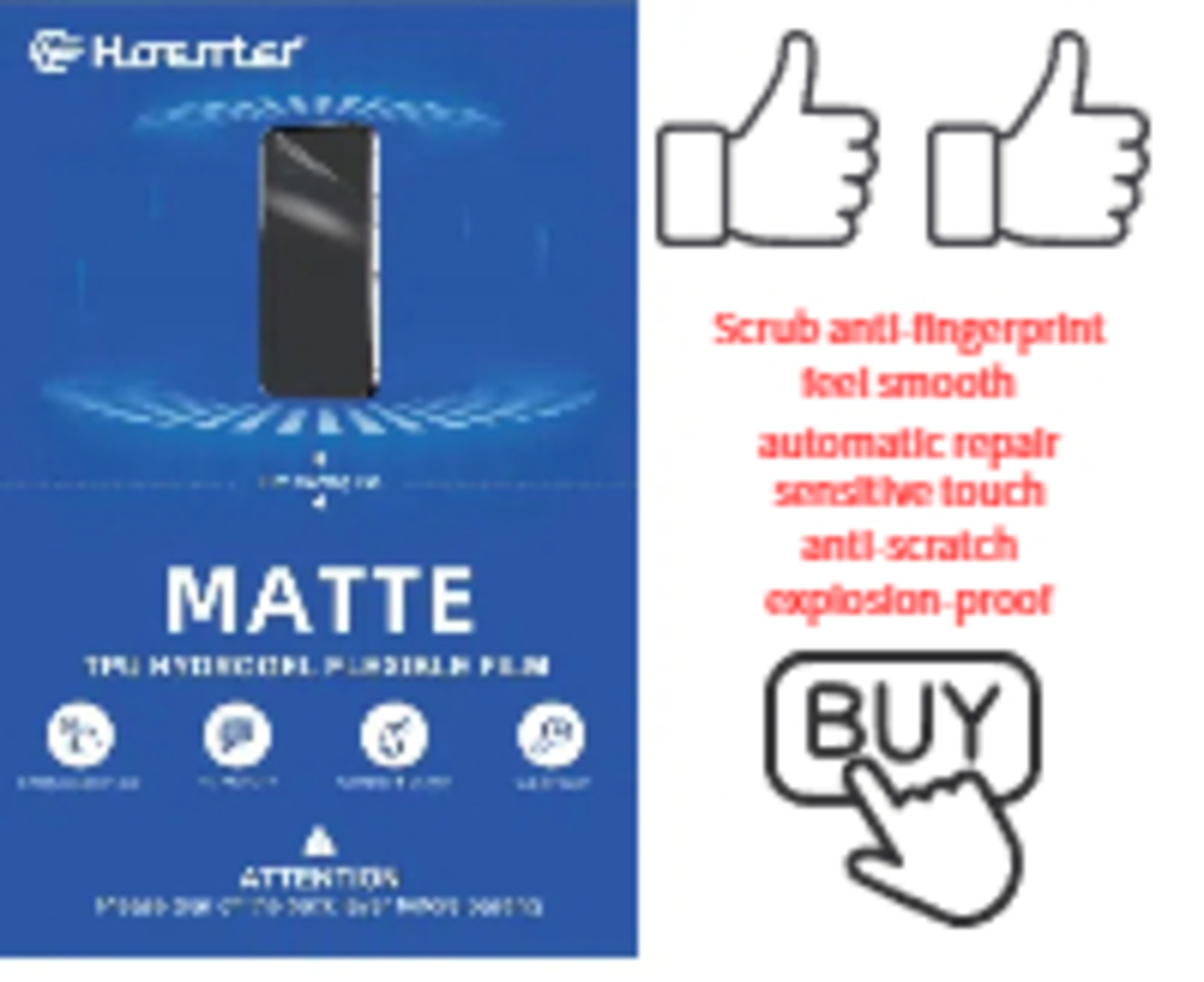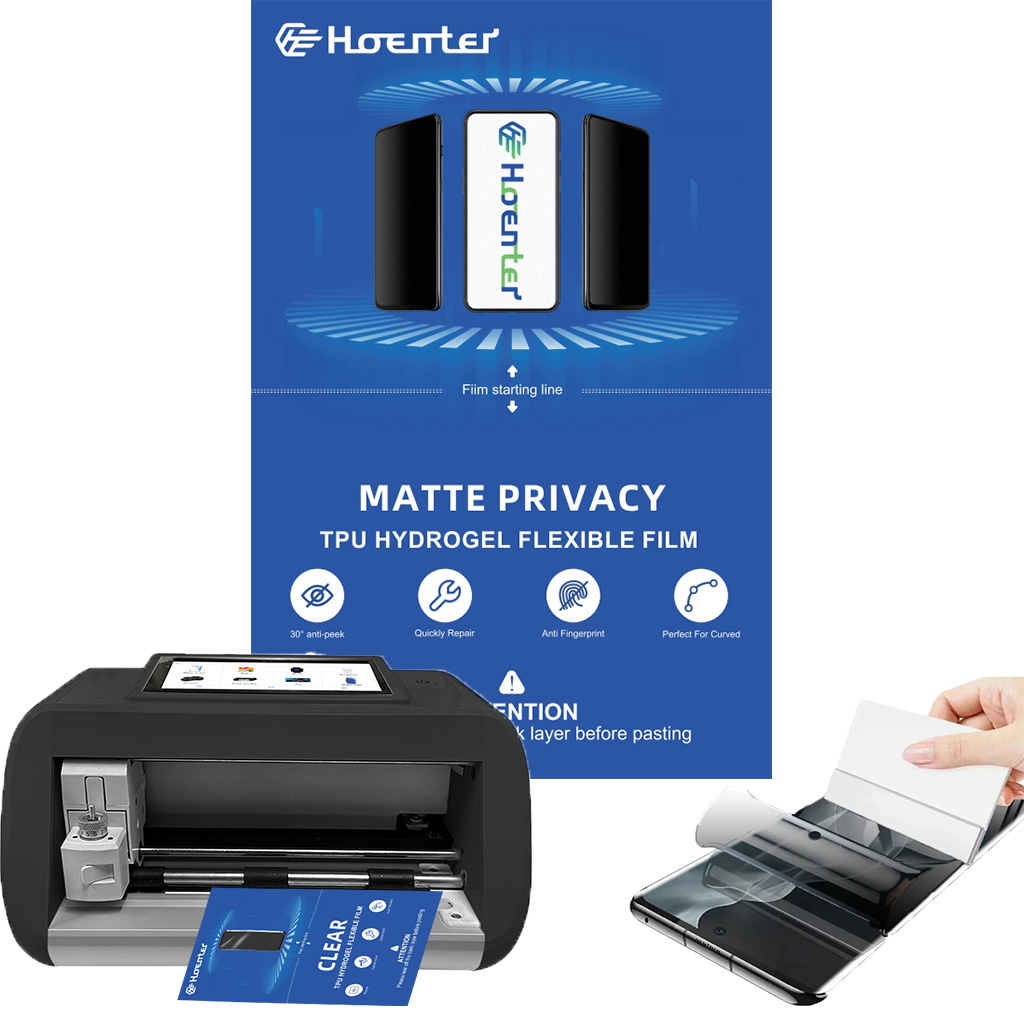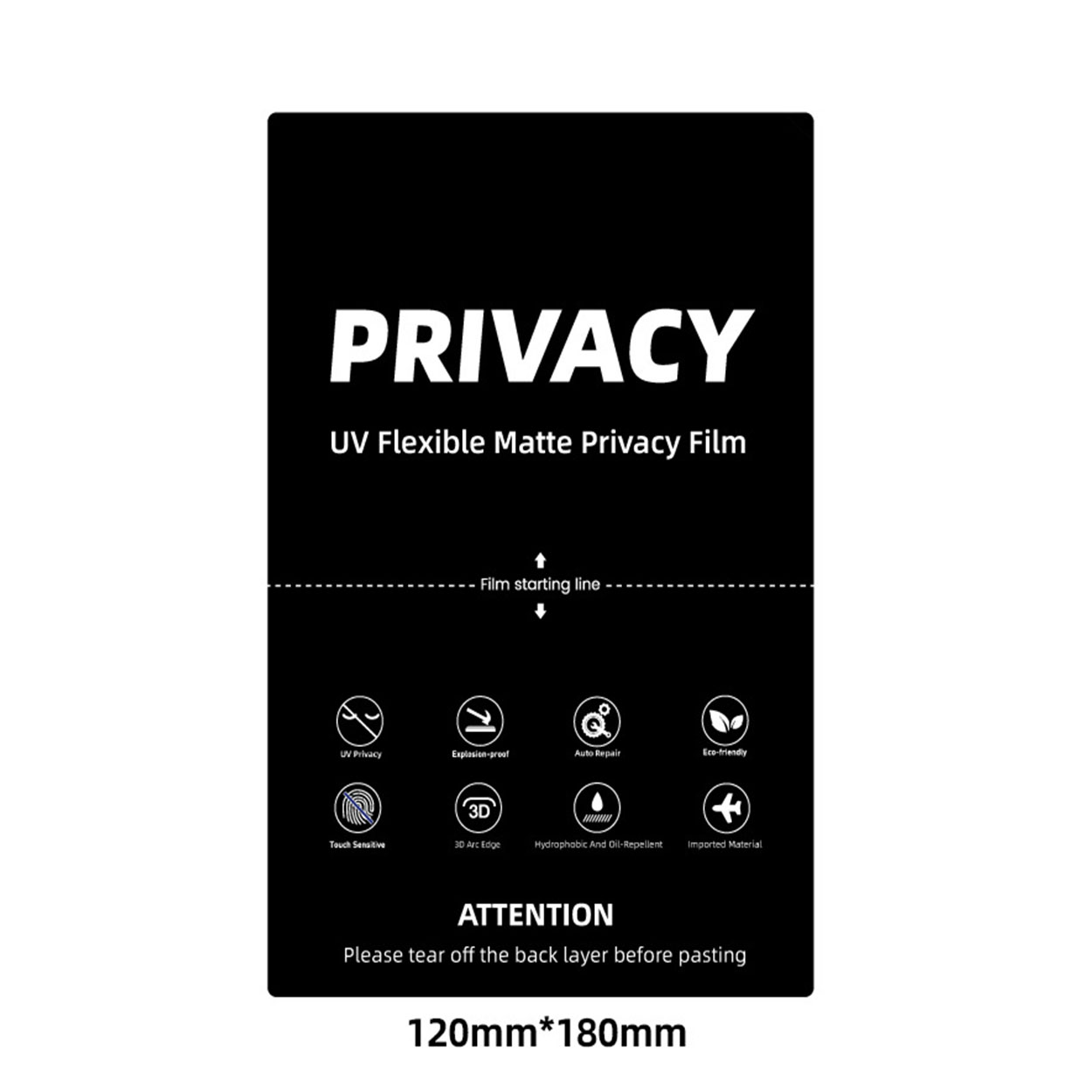
Screen Protector Lifetime Warranty
Table of Contents
Summary
These warranties offer a significant value proposition to consumers by providing long-term protection against defects in materials and
workmanship. However, the exact definition of “lifetime” can vary significantly among manufacturers, ranging from the entire period the original purchaser owns the device to a more limited time frame explicitly stated in the warranty terms. Screen protectors themselves are available in various types, including liquid, film-based, tempered glass, and advanced materials like ceramic and nano-coatings, each offering unique benefits and protection levels for electronic device screens. Liquid screen protectors use nano-coating technology to form an invisible layer on the device’s screen, while film-based protectors are thin sheets that adhere to the screen using static or adhesive properties. Tempered glass protectors are known for their superior drop and scratch resistance, and advanced versions may include ion
exchange technology for increased durability. Brands like ZAGG and BodyGuardz are notable for offering lifetime warranties on their screen protectors, though the terms can vary. For instance, ZAGG requires product registration and proof of purchase for warranty claims, while BodyGuardz offers free replacements under its Advantage Program for two years, with conditions such as returning the original protector within 60 days. The legal framework surrounding these warranties can be complex, as companies have leeway in defining
“lifetime,” often using it as a marketing tool rather than a definitive promise. Understanding the terms, conditions, and limitations of these warranties is crucial for consumers to make informed decisions. Most warranties do not cover damage from misuse or unauthorized repairs, and claims may involve additional costs like shipping and handling. Additionally, outsourcing warranty management has become a
common practice among manufacturers to enhance efficiency and customer satisfaction, leveraging third-party expertise and technology solutions. This multifaceted approach helps mitigate the logistical challenges of managing lifetime warranties, ultimately benefiting both manufacturers and consumers.
Types of Screen Protectors
Screen protectors come in a variety of materials and styles, each offering unique benefits and levels of protection for electronic device screens. The primary types of screen protectors include liquid, film-based, tempered glass, and advanced material protectors like ceramic and nano-coatings.
Liquid Screen Protectors
Liquid screen protectors involve applying a liquid solution that contains nano-coating technology to the device’s screen. This forms an invisible protective layer that enhances the screen’s resistance to scratches and minor impacts. Liquid screen protectors are easy to apply and do not require precise alignment like traditional protectors. However, they may not provide the same level of protection against severe
impacts as tempered glass protectors.
Film-based Screen Protectors
Film-based protectors are thin, transparent sheets made from materials like polyurethane or polyethylene terephthalate (PET). They adhere to the screen using static or adhesive properties and offer basic scratch protection, as well as reducing glare and fingerprints. These protectors are generally less expensive than tempered glass and provide a smooth touch experience. However, their impact resistance is
lower compared to tempered glass protectors.
Tempered Glass Screen Protectors
Tempered glass protectors are among the most popular due to their superior protection against drops and cracks. They mimic the original display and offer excellent clarity. Tempered glass protectors are thicker and more noticeable on the screen compared to plastic protectors but provide greater durability and scratch resistance. Many tempered glass protectors also come with additional features like privacy filters
and anti-glare properties.
Advanced Tempered Glass
Some advanced tempered glass protectors incorporate ion exchange technology to increase surface compression, enhancing strength and scratch resistance. These protectors may also feature reinforced edges to prevent chips and cracks, and coatings that make fingerprints virtually invisible.
Ceramic and Nano Liquid Screen Protectors
Ceramic and nano liquid protectors provide good protection against everyday scratches, imperfections, and minor impacts. They offer a balance between durability and maintaining the original screen appearance. Ceramic protectors, in particular, offer superior scratch resistance, while nano liquid protectors are known for their ease of application and seamless finish.
Flip Covers and Cases
An alternative to direct screen protection is using flip covers or cases that protect the entire device. These covers usually have a front flap that shields the screen when not in use, offering protection from scratches and impacts. While they may not offer the same level of direct screen protection as screen protectors, they provide comprehensive coverage for the entire device, including the screen.
Advancements in Screen Protector Materials
Recent advancements have seen the introduction of hybrid materials combining tempered glass with polymers, offering superior impact resistance without compromising clarity. The development of flexible screen protectors using materials like graphene and elastomers caters to the growing demand for protectors that can adapt to foldable devices, ensuring both protection and display clarity are maintained
Importance of a Lifetime Warranty
A lifetime warranty can provide significant value to consumers by protecting them against defects in materials and workmanship for the entire duration of the product’s life. This type of warranty often covers all parts and components, ensuring that consumers can rely on comprehensive protection. However, it is important to note that lifetime warranties are typically non-transferable and only apply to the original purchaser, meaning subsequent owners are not covered unless they obtain their own separate warranty. The terminology and legal framework surrounding lifetime warranties can be misleading. Companies have considerable leeway in defining what “lifetime” means, often using it as a marketing tool rather than a definitive promise. For instance, a lifetime warranty could legally be limited to a period as short as three months or three years, provided that the duration is explicitly stated. This variability necessitates a careful review of the fine print when evaluating products based on their lifetime warranty claims. For those engaged in industries like lighting, a lifetime warranty can be particularly beneficial. It acts as a safeguard against unplanned replacement costs and aligns with the increasing focus on sustainability in building operations and maintenance. Such warranties ensure that investments in new technologies and products are protected, making the choice of a reliable business partner more critical than ever. Consumers should also be aware of their broader rights, as some manufacturers may be reluctant to honor their warranties without a fight. Even in the absence of a written guarantee, consumers have implied protections that can compel manufacturers to repair or replace defective products. Therefore, understanding the type of warranty and the legal protections available can be crucial in ensuring that a company honors its commitments. Finally, outsourcing warranty management can also impact the perceived value of a lifetime warranty. By leveraging the economies of scale and advanced technology solutions offered by third-party providers, manufacturers can reduce operational costs and improve the efficiency of their warranty processes. This can lead to better customer satisfaction and more reliable warranty fulfillment, further enhancing the value of a lifetime warranty.
Brands Offering Lifetime Warranties
Several brands in the market offer lifetime warranties on their screen protector products, each with its own specific terms and conditions. These warranties are designed to provide consumers with a sense of security and assurance about the durability and longevity of their purchases. Below are some of the prominent brands known for their lifetime warranties on screen protectors. protectors.
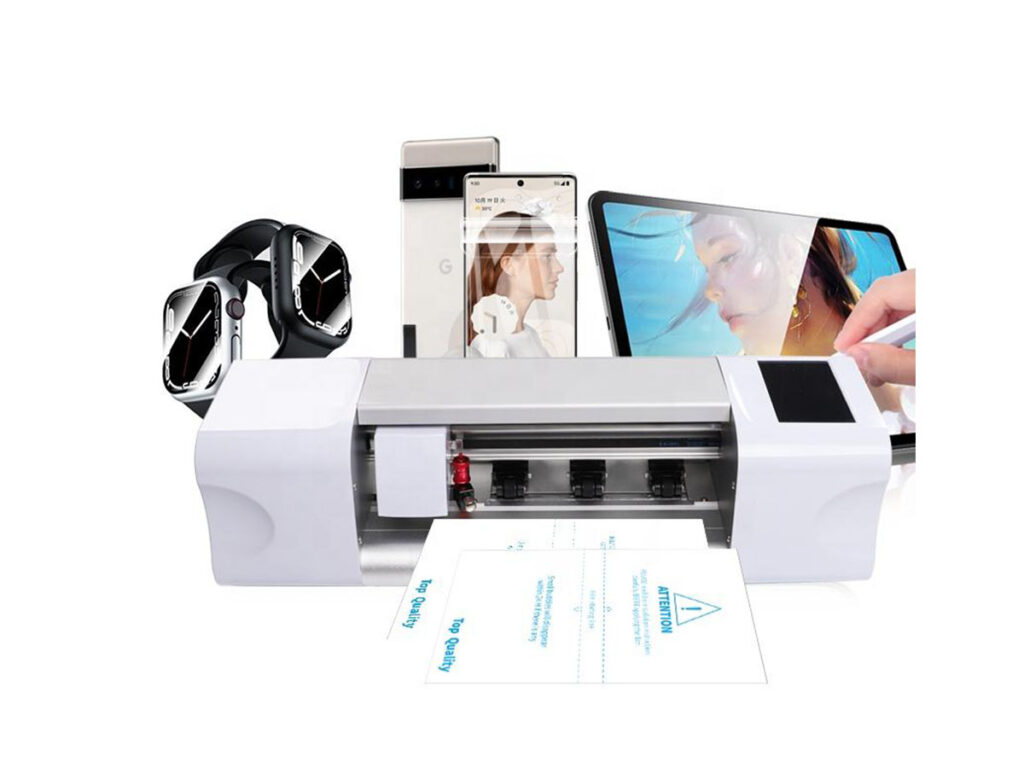
ZAGG
ZAGG offers a variety of screen protectors under its brands including InvisibleShield, IFROGZ, mophie, Gear4, and BRAVEN. The company provides both limited lifetime warranties and one-year or two-year manufacturer’s warranties, depending on the product. To be eligible for a warranty replacement, the original purchaser must register the product on ZAGG.com and provide proof of purchase. Products bought from unauthorized sellers, especially online marketplaces like Amazon and eBay, are not covered under ZAGG’s warranty policy. ZAGG’s warranty does not cover damages from misuse or unauthorized repairs, and any suspected warranty fraud can lead to denial of claims.
BodyGuardz
BodyGuardz offers what it calls “The Ultimate Device Protection®” along with an ultimate replacement program. Once a screen protector is registered under the BodyGuardz Advantage Program, replacements are free for the product’s lifetime, which is defined as two years from the date of the original purchase. The only cost involved is shipping. Customers are required to return the original screen protector
within 60 days of receiving the replacement, failing which they will be charged the full price for the new screen protector. Products purchased from unauthorized sellers are excluded from the benefits of this program.
Best Buy and Consumer Reviews
Best Buy customers have praised ZAGG’s screen protectors for their quality, ease of use, and the value offered by the limited lifetime warranty. The ZAGG InvisibleShield Glass Elite Screen Protector, for example, has received near-perfect reviews with users noting its impact and scratch protection, anti-microbial coating, and ease of application. This positive consumer feedback highlights the trust and reliability placed in ZAGG’s lifetime warranty.
Legal and Practical Considerations
The term “lifetime warranty” can be legally vague, and its actual meaning depends on the specific terms set by the manufacturer. Companies can legally define “lifetime” in a way that suits them, which could range from a few months to several years, as long as it is explicitly stated in the warranty terms. Consumers are advised to read the fine print to understand the scope and duration of coverage. Understanding the different kinds of warranties, including express and implied warranties, and the specific conditions under which they apply, can help consumers make informed decisions about their purchases. Activities such as misuse of the product can invalidate the warranty, negating the ability to return or replace a damaged product.
Conditions and Limitations
The conditions and limitations associated with a screen protector lifetime warranty are crucial to understand to fully leverage the benefits offered. Generally, these warranties come with specific exclusions and limitations that are dictated by the manufacturer.
Exclusions
Most lifetime warranties do not cover defects resulting from normal wear and tear, cosmetic damage, improper or unreasonable use, and failure to follow operating instructions. Damage caused by external factors such as accidents, misuse, natural disasters, or unauthorized modifications is also typically excluded. For instance, damage from fire, lightning, or power surges is not covered under most warranties. Additionally, unauthorized alterations or modifications to the product void the warranty.
Jurisdictional Variations
Warranty terms can vary significantly based on jurisdiction. Some regions do not allow limitations on the duration of an implied warranty, or the exclusion of incidental or consequential damages, making some of the standard limitations inapplicable. Specifically, in certain jurisdictions, limitations may not apply to claims related to death or personal injury, or statutory liabilities for intentional or grossly negligent acts.
Customer Responsibilities
Customers are generally responsible for the cost of repairs if the product proves defective after purchase, unless otherwise restricted by applicable law. Some companies, like Spigen, reserve the right to replace, repair, rebuild, or recondition the products at their sole discretion. If the product under warranty is no longer available, a similar or superior product may be provided as a replacement.
Proof of Purchase and Registration
To initiate a warranty claim, customers usually need to provide proof of purchase, a description of the issue, and photographic or video evidence. Products often need to be registered within a specified period (e.g., within 30 days of purchase) to be eligible for warranty claims. For example, Gadget Guard requires screen protectors to be registered within 30 days to qualify for free warranty replacements.
Costs Associated with Warranty Claims
Although the replacement of the screen protector itself might be free, shipping and handling charges often apply. These costs can vary depending on the shipping option chosen, such as ground, priority, or overnight shipping. Customers are advised to read and understand the terms and conditions of the warranty before making a purchase to avoid unexpected costs.
Documentation and Return Requirements
Manufacturers may require customers to return defective parts or even the entire product before issuing a replacement or repair. It’s important to keep all documentation, including the purchase receipt and any associated warranty information, to facilitate the claim process. This is particularly important as some companies may only cover the cost of the new part, with labor costs being the responsibility of the customer.
Common Issues or Defects Covered
Screen protector lifetime warranties generally aim to cover various defects or issues that may arise with the product. These warranties often focus on ensuring that the screen protector remains functional and provides the intended level of protection throughout its lifetime.
Defects in Materials and Workmanship
Many warranties include coverage for defects in materials and workmanship. This implies that if a screen protector or a part of it has a known defect or a defect discovered during production, it may be eligible for replacement under the warranty. However, if the issue arises from improper maintenance or misuse, it might not be covered.
Manufacturing Defects
Manufacturing defects, including those discovered before installation, are often covered under lifetime warranties. For instance, if a SUSTAIN GLASS screen protector is found to be defective before installation, it can be reported to the manufacturer for a replacement. In some cases, proof of purchase and original packaging may be required for the warranty claim.
Damage During Installation
Some warranties specifically cover damage incurred during the installation process. For example, if scratches or cracks occur while installing a screen protector, companies like gonimble.com offer free replacements, with the customer only responsible for shipping costs.
Defects Resulting from Specific Incidents
Certain warranties also account for defects resulting from specific incidents such as power surges, exposure to varying environments, and poor storage conditions. However, it’s important to note that exclusions apply, particularly for normal wear and tear or cosmetic damages unless these are due to a defect in manufacturing.
Testing Methods
Hardness testing for mobile phone screen protectors, particularly tempered glass, typically involves using pencils with varying degrees of scratching power. This process begins with the softest pencil, marked as 6B, and proceeds to harder pencils until one is found that can scratch the surface. The Mohs hardness rating of a material is determined by the hardest pencil that manages to scratch it. For tempered glass screen protectors, this is usually the 9H pencil, and this rating indicates the scratch resistance of the screen protector. However, it is important to note that this hardness rating does not measure impact resistance, flexibility, or other types of durability.
Limitations and Exclusions
While lifetime warranties provide extensive coverage, they often come with limitations. For example, they might not cover damage due to catastrophic incidents that render the device inoperable, such as liquid damage or extreme impacts. Additionally, damages caused by improper use or non-compliance with operating instructions are typically excluded. Consumers are advised to read the terms and conditions carefully to understand the specific limitations and exclusions of their screen protector’s warranty. Some warranties also stipulate that only original purchases are covered and replacements or refunded items may not be eligible for subsequent claims.
How to Claim a Lifetime Warranty
Claiming a lifetime warranty on a screen protector involves several important steps to ensure your product is either replaced or repaired efficiently.
Documenting the Purchase and Warranty
First and foremost, it is essential to keep all documentation related to your screen protector purchase, including the purchase receipt and any associated warranty information. This documentation is crucial when filing a claim in the future. Additionally, documenting any issues you encounter with the product will help support your case during the warranty claim process.
Registering the Product
To streamline the warranty process, you should register your product as soon as possible. For instance, some companies require you to log into their website and register your product under a specific section. You will often need to use drop-down menus to find your product and complete the registration process. Upon successful registration, you typically receive confirmation emails, including an approval of your registration.
Filing a Claim
When you need to file a claim, it is vital to understand the specific terms and conditions of your warranty. Lifetime warranties often cover defects in materials and workmanship but may have limitations based on misuse or other exclusions. To initiate a claim, you might need to return the defective product to the manufacturer. Be prepared to cover the shipping costs for sending the product back, and ensure you follow any additional steps provided by the manufacturer for processing the warranty claim.
Replacement and Shipping
If the claim is approved, the manufacturer will either replace the product or provide a product of equal value. Some companies may offer refurbished products as replacements. The replacement product typically assumes the remaining warranty period of the original product or extends the warranty for an additional period, such as 90 days, whichever is greater. Shipping costs for the replacement product are
usually the responsibility of the purchaser, particularly if they are outside the United States. In some cases, failing to return the original defective product within a specified time frame, such as 60 days, may result in charges to your credit card for the full retail price
of the replacement product. Thus, it is crucial to adhere to the timelines provided by the warranty terms to avoid any additional costs.
Understanding the Fine Print
The term “lifetime warranty” can be misleading as its duration is defined by the company offering it. Therefore, it is crucial to read and understand the fine print of any warranty before making a purchase. A lifetime warranty might only last a few years or even months, as long as it is explicitly defined by the company. Always ensure you are comfortable with the terms before proceeding with a purchase. By following these steps and understanding the specifics of your screen protector’s lifetime warranty, you can effectively navigate the process and secure a replacement or repair when necessary.

Legal Obligations of Manufacturers
Manufacturers have specific legal obligations when it comes to warranties on consumer products. These obligations are primarily governed by laws such as the Uniform Commercial Code (UCC), the Magnuson-Moss Warranty Act of 1975, and Federal Trade Commission (FTC) rules. The Magnuson-Moss Warranty Act, for example, mandates that warranties on consumer products must be clearly understandable and enforceable. This Act was designed to address issues arising from manufacturers using disclaimers that might be considered unfair or misleading.
Types of Warranties
There are two main types of warranties that manufacturers may provide: express and implied.
Express Warranties
Express warranties are those explicitly stated by the seller or manufacturer at the time of purchase. These warranties promise that the product will perform as described, and if it fails to do so, the consumer may be entitled to a refund, replacement, or repair. However, written express warranties must comply with the provisions of the Magnuson-Moss Warranty Act. This law does not apply to oral warranties, service warranties, or products resold to other merchants
Implied Warranties
Implied warranties are automatically provided under the UCC and ensure that the product will work as described, be free of substantial defects, and function properly for a reasonable period of time. The most common implied warranty is the “implied warranty of merchantability,” which typically applies for four years after the urchase. Implied warranties generally apply only to products sold by retailers and not private sellers.
Limitations and Disclaimers
Manufacturers often include disclaimers and limitations within their warranty terms. For example, they may limit the duration of an implied warranty to the length of the express warranty. However, they cannot completely disclaim implied warranties if such disclaimers would be unlawful. Furthermore, many states have specific regulations that affect how a seller can sell a product “as is,” and such sales do not entirely exempt the seller from liability if the product is dangerous or defective.
Recourse for Consumers
Consumers have several options if a manufacturer fails to honor a warranty. They can stop making installment payments until the seller or manufacturer agrees to fulfill the warranty, though this carries the risk of being sued for missed payments. Mediation through the Better Business Bureau or legal action can also be pursued if the dispute cannot be resolved amicably. The Magnuson-Moss Warranty Act
provides a means for consumers to enforce warranty terms through the FTC. By understanding these legal obligations and the types of warranties that manufacturers can provide, consumers can better navigate their rights and recourses in the event of a warranty dispute.
Logistical Challenges in Managing Lifetime Warranties
Managing lifetime warranties presents a range of logistical challenges for manufacturers and retailers. One primary difficulty lies in the multifaceted warranty process, which spans multiple functions within an organization, such as product engineering, quality control, sales, supply chain management, and finance. This complexity demands a comprehensive approach to ensure efficiency and customer satisfaction.
Warranty Process Flow
The typical warranty process begins when a customer requests a return, repair, or replacement of a product. This involves goods receipt by the service center or manufacturer and the subsequent repair process. Managing these steps in-house can become increasingly challenging as the volume and complexity of warranty claims grow.
Cost and Resource Allocation
One of the main hurdles in managing warranties internally is the allocation of staff and resources. The process is often labor-intensive, requiring dedicated personnel to handle claim submissions, validate claims, coordinate with suppliers and service providers, manage inventory and logistics, and ensure timely customer communication. This can divert valuable resources away from core business activities,
hindering a company’s ability to focus on product development, innovation, and growth.
Labor Costs and Customer Interaction
Additionally, many warranties do not cover the cost of labor for repairs, placing the burden on customers to find authorized service providers and pay for labor out-of-pocket. This adds another layer of complexity, as manufacturers need to maintain a network of authorized service personnel and ensure they can promptly address customer issues.
Non-Transferability and Coverage Limitations
Lifetime warranties often come with restrictions, such as non-transferability and limited coverage to the original purchaser. This can complicate customer interactions and satisfaction, especially when dealing with second-hand products or items purchased from unauthorized retailers. Products bought from unauthorized resellers or second-hand marketplaces like eBay are typically not covered under warranty policies.
Integration and Compliance
Keeping up with evolving industry regulations and compliance requirements is another significant challenge. Integrating warranty management with other business processes and adapting to changing customer expectations necessitates continuous improvement and innovation in warranty handling. Advanced warranty management systems, including integrated platforms and mobile apps, can help streamline these processes but require substantial investment and expertise.
Outsourcing as a Solution
Given these challenges, many manufacturers opt to outsource their warranty management to specialized providers. Outsourcing can streamline and optimize warranty processes, leveraging the expertise and best practices of third-party companies. These providers can implement centralized claim submission portals, use advanced analytics and machine learning algorithms to automate claim validation, and provide seamless integration with existing business systems, ultimately reducing operational burdens and enhancing customer service.
Comparison with Other Warranty Types
When examining the lifetime warranty often advertised for screen protectors, it is essential to understand how it compares with other common warranty types, such as One-Year and Two-Year Manufacturer’s Warranties, and Limited Lifetime Warranties.
One-Year and Two-Year Manufacturer's Warranties
One-Year and Two-Year Manufacturer’s Warranties are time-limited guarantees provided by the seller to ensure the quality and performance of a product for a specified period—either one or two years from the date of purchase. These warranties typically cover defects in materials and workmanship, allowing buyers to seek repair or replacement within the designated period if the product fails to perform as promised.
Limited Lifetime Warranty
A Limited Lifetime Warranty generally offers a more extended coverage period compared to the standard one or two-year warranties. However, it is subject to specific limitations and conditions. For example, a limited lifetime warranty may require the original purchaser to register the product within a certain timeframe, usually 30 days from the date of purchase, to activate the warranty. This type of warranty often covers defects in materials and workmanship but excludes normal wear and tear, misuse, and unauthorized modifications.
Express Warranties
Express warranties are created through explicit statements or actions by the seller, such as promises, descriptions, or models of the product. These warranties assure the buyer of the quality and functionality of the product based on the seller’s representations. The scope and terms of express warranties can vary widely, depending on the seller’s specific commitments.
Legal Protections
It is also important to note the legal protections provided by laws such as the Warranty Act, which stipulates that companies cannot void warranties or deny coverage solely because the customer used third-party parts or services. This regulation ensures that the buyer’s warranty rights are maintained even when non-original parts are used, provided these do not cause defects or damage to the product.
Consumer Reviews and Feedback
Consumer feedback on screen protectors often highlights several key factors that influence their purchasing decisions and overall satisfaction. One significant consideration is the material used in the screen protector. Experts and consumers alike favor tempered glass for its superior scratch and fall resistance, contributing to higher satisfaction levels among users. Additionally, consumers appreciate screen protectors that offer comprehensive coverage, ensuring the protector fits the entirety of the phone screen, whether it is for Apple or Android smartphones. Consumers have also expressed interest in additional features such as water resistance, which provides protection against occasional water exposure, adding an extra layer of convenience and assurance. Privacy screen protectors receive mixed
reviews; while they effectively limit the viewing angle to prevent others from seeing the display, some users find the reduced viewing angle to be less restrictive than anticipated. In crowded places like subways or buses, people standing nearby may still catch glimpses of the display. Another appreciated feature is the inclusion of coatings that enhance usability. For instance, anti-glare coatings, blue light filters, and oleophobic and hydrophobic coatings help reduce eye strain and keep the screen protector free from fingerprints and oil smudges. These enhancements are often highlighted positively in consumer reviews, contributing to a higher overall satisfaction rate.
However, the feedback also indicates some drawbacks. Privacy screen protectors, while offering privacy, may complicate screen sharing, requiring the user to angle the screen precisely to show others a video or photo. Despite these minor inconveniences, the advantages of screen protectors, such as protecting the display from scratches and damage during accidental drops, often outweigh the disadvantages,
leading to a generally positive reception among users.
Comments
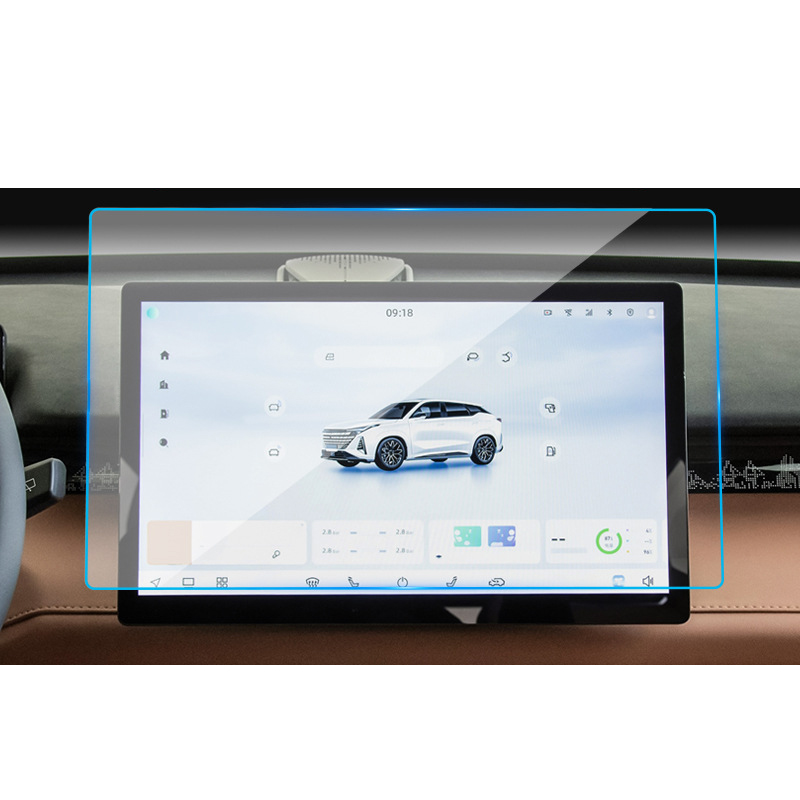
Jeep Wrangler JL Navigation GPS Tempered Glass
Our Wrangler JL Navigation Screen Protector offers superior protection for your GPS display.

Are Phone Cases with Built-In Screen Protectors Good?
Built-in screen protectors save time and effort with all-in-one protection.

How to choose the best screen protector factory for your business
Choosing the right screen protector factory is critical to your business and can significantly impact product quality, customer satisfaction, and overall profitability.
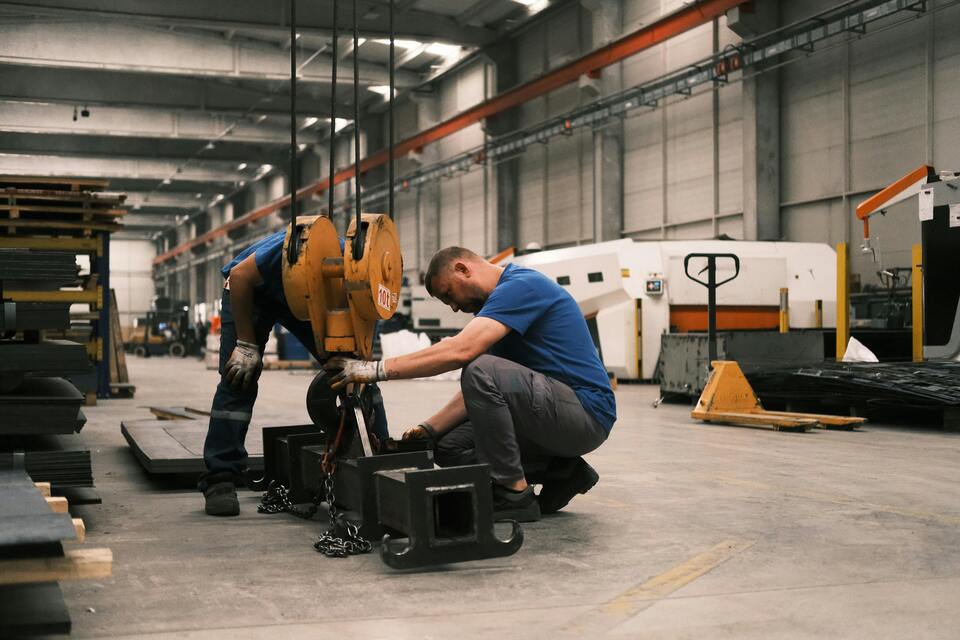
How to Put the Screen Protector?
A well-applied screen protector can significantly extend the life of your smartphone’s screen.

Investing in a Smart Privacy Screen Cutting Machine-What You Need to Know
Investing in smart privacy screen cutting machines provides a strategic opportunity for the company to meet the growing demand for customized privacy solutions in both the residential and commercial sectors, while leveraging technological innovation and sustainable practices to enhance product competitiveness.
Tags
Find All knowledge and trends from our blog, get the wholesale price and best quality from our factory.

What Film Cutting Machine and Its Application
Film cutting machines have played a crucial role in the evolution of filmmaking and various industrial processes by enabling precise cutting and splicing of film materials.

What Is a Screen Protector Cutting Machine?
A screen protector cutting machine is a specialized device designed to produce custom-fit screen protectors for various electronic devices, including smartphones, tablets, smartwatches, laptops, and monitors.

How Mobile Phone Screen Protector Cutting Machine Work?
A mobile phone screen protector cutting machine is a sophisticated device designed
to produce customized screen protectors for various digital devices with high preci
sion and efficiency.

Characteristics of Mobile Phone Tempered Glass and Mobile Phone TPU Screen Protector
Thermoplastic polyurethane (TPU) screen protectors are flexible, durable, and
self-healing plastic films designed to protect electronic device screens from
scratches, impacts, and other potential damages.

Revolutionize Device Protection with Screen Guard Cutting Machine
Whether you possess a smartphone, tablet, or smartwatch, this versatile machine accommodates a vast array of devices. It seamlessly adapts to the dimensions of your gadget, offering a custom fit that generic protectors can’t match.

Screen Protector Lifetime Warranty
A screen protector lifetime warranty is a guarantee provided by manufacturers that
promises to repair or replace a screen protector for the lifetime of the product, under specific terms and conditions.


